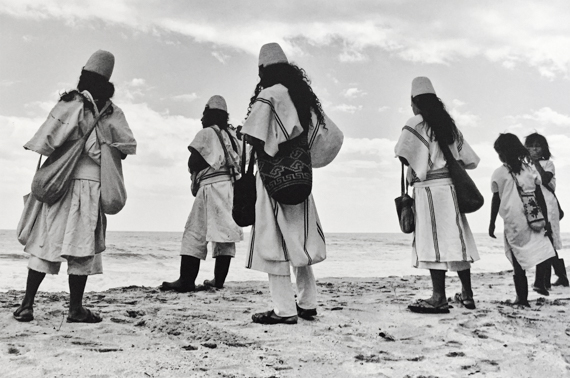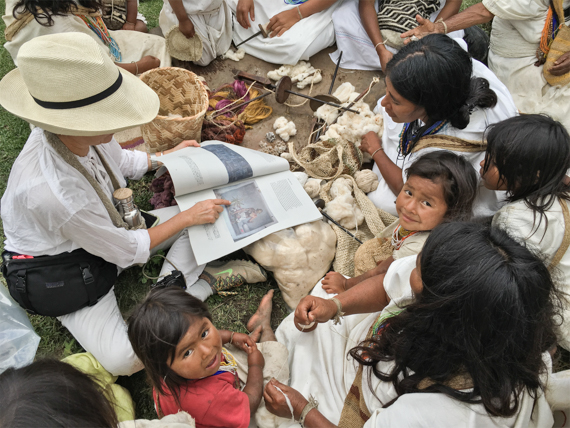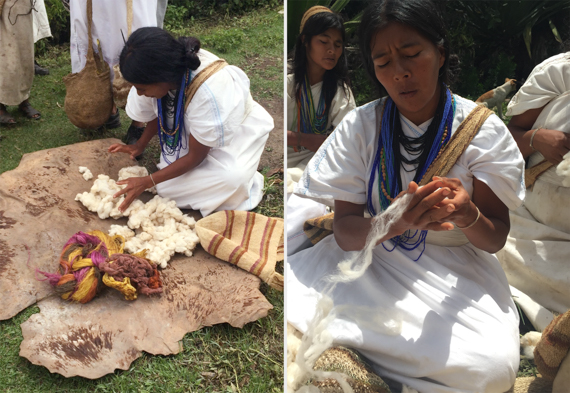Sierra Nevada de Santa Marta Project
Sierra Nevada de Santa Marta Project
Sierra Nevada de Santa Marta, Colombia
“When the heart thinks, it weaves” an Arhuaco saying from Peter Elsass’, Strategies for Survival: The Psychology of Cultural Resilience in Ethnic Minorities
A vital part of my design practice is developing relationships with artisans to support and honor their living traditions. My curiosity about the white bag from the Sierra Nevada de Santa Marta, Colombia began in the late ‘80s, when I bought five mochilas with geometric designs from a Colombian craft store in New York City. There, I was told about the white cotton bag, which symbolizes the snow-covered peaks in the coast of Colombia, and is used only by the mamos or priests. Ever since, I searched for the white bag. When Colombian journalist, Marcella Echavarria, asked me to do an interview, I asked her in return to help me track down the white bag. In 2011, she gifted one to me, deepening my search to learn more.
In 2016, I was invited by collaborator Clara Llano to visit the Arhuacos, an indigenous group from Colombia. After discussing with the community, they invited me back to develop a mutually beneficial exchange. The funds from selling the bags go towards continuing the work, providing a steady income for the community, and building a traditional style community center for women. Mochilas or tutus are made by women and children of the community, and carry immense meaning with each stitch representing thought. This project is a long-term commitment to create a comprehensive documentation of the women’s work and traditions, to give back to the community, and to share hand-sewing skills that have been forgotten by the Arhuacos.


















